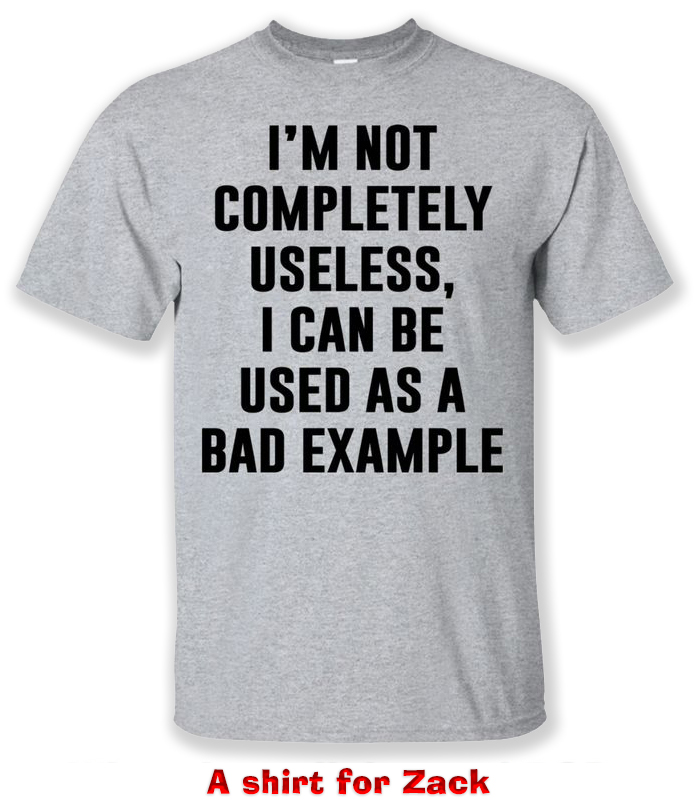We post news and comment on federal criminal justice issues, focused primarily on trial and post-conviction matters, legislative initiatives, and sentencing issues.

WHITHER RAHIMI?
No one who paid any attention to Zackey Rahimi’s case doubted for a moment that the Supreme Court would find a way to uphold the constitutionality of 18 USC § 922(g)(8), the subsection of the felon-in-possession statute that prohibited people subject to domestic protection orders (DPO) from possessing guns.
Old Zackey is 87 miles of bad track, a bad boy’s bad boy. He was hit with a DPO for bouncing his girlfriend’s face off his car’s dashboard. After the DPO was issued, Zackey kept harassing her anyway, For good measure, he also shot at another car in an unrelated road rage incident and opened fire at a What-a-Burger when his friend’s credit card was declined. Zack is not a sympathetic defendant.
 On Friday, the Supreme Court upheld § 922(g)(8) (at least as it had been applied to Zack), concluding that the nation’s “tradition of firearm regulation allows the Government to disarm individuals who present a credible threat to the physical safety of others.”
On Friday, the Supreme Court upheld § 922(g)(8) (at least as it had been applied to Zack), concluding that the nation’s “tradition of firearm regulation allows the Government to disarm individuals who present a credible threat to the physical safety of others.”
The 8-1 majority (Justice Thomas dissenting) observed that “some courts have misunderstood the methodology of our recent Second Amendment cases,” meaning New York State Rifle & Pistol Ass’n v. Bruen. The Court cautioned against taking too rigid a view of the historical tradition of gun regulation that Bruen requires to be found in order to hold that a firearm statute is consistent with the Second Amendment. Instead, courts should look at whether the modern law being challenged is “relevantly similar” to historical regulations “in both why and how it burdens the Second Amendment right. Section 922(g)(8) restricts gun use to check demonstrated threats of physical violence, just as the [colonial-era] surety and going armed laws do. Unlike the regulation struck down in Bruen, Section 922(g)(8) does not broadly restrict arms use by the public generally.”
SCOTUS held that courts should focus on the purpose of the regulation and the burden that it places on the Second Amendment right to bear arms. “For example,” Chief Justice Roberts wrote, “if laws at the founding regulated firearm use to address particular problems, that will be a strong indicator that contemporary laws imposing similar restrictions for similar reasons fall within a permissible category of regulations.”
Zack challenged 922(g)(8)’s facial constitutionality – that is, he argued that the law is always unconstitutional – rather than arguing it was unconstitutional “as applied” to Zack’s situation. That probably was the better of a bad choice, because an “as applied” challenge would have focused on Zack, whose personal history was terrible. The Court, ruling that 922(g)(8) was not facially unconstitutional, had no problem concluding that “Section 922(g)(8) is constitutional as applied to the facts of Rahimi’s own case.”
 The Rahimi majority opinion (before the five concurring opinions and one dissent), ends with before now, “this Court did not undertake an exhaustive historical analysis… of the full scope of the Second Amendment. Nor do we do so today. Rather, we conclude only this: An individual found by a court to pose a credible threat to the physical safety of another may be temporarily disarmed consistent with the Second Amendment.” (Emphasis added by me).
The Rahimi majority opinion (before the five concurring opinions and one dissent), ends with before now, “this Court did not undertake an exhaustive historical analysis… of the full scope of the Second Amendment. Nor do we do so today. Rather, we conclude only this: An individual found by a court to pose a credible threat to the physical safety of another may be temporarily disarmed consistent with the Second Amendment.” (Emphasis added by me).
Ohio State law professor Doug Berman, writing in his Sentencing Policy and Law blog, observed that the closing ‘only this’ statement “leads me to think that litigation over the Second Amendment is not going to get much easier for lower courts after this ruling.”
The Washington Post said, “The decision was limited in scope, leaving for another day more difficult questions about the viability of other gun-control measures, such as… restrictions on gun possession by nonviolent offenders.” USA Today said the decision doesn’t foreshadow how Rahimi’s more flexible approach in applying history “will be applied to other restrictions such as prohibiting non-violent felons from having guns, according to Joseph Blocher, co-director of the Center for Firearms Law at Duke University School of Law.”
 Rahimi leaves us with almost as many questions about the constitutionality of § 922(g)(1) — the actual felon-in-possession subsection — as we had before last Friday’s decision. There are few hints in the opinion, although SCOTUS did unanimously reject the government’s argument that Zack could be deprived of his right to have a gun because he is not a “responsible” citizen.
Rahimi leaves us with almost as many questions about the constitutionality of § 922(g)(1) — the actual felon-in-possession subsection — as we had before last Friday’s decision. There are few hints in the opinion, although SCOTUS did unanimously reject the government’s argument that Zack could be deprived of his right to have a gun because he is not a “responsible” citizen.
Arguments that convicted felons are not “responsible” citizens have been government mainstays in contending that § 922(g)(1) is consistent with Bruen. “‘Responsible’,” Roberts wrote, “is a vague term. It is unclear what such a rule would entail, and there is no support for such a rule in the Supreme Court’s Second Amendment cases.”
UCLA law professor Eugene Volokh wrote in Reason that
The majority repeated Heller’s statement that “prohibitions… on the possession of firearms by ‘felons and the mentally ill’ are ‘presumptively lawful’… This suggests that the Court remains generally open to those restrictions, even though it turns out such restrictions actually lack a long historical pedigree.
At the same time, perhaps there is some room after Rahimi for this “presumpti[on]” to be rebutted with regard to people convicted of felonies that don’t suggest a “credible threat to the physical safety of others,” especially if those felonies are part of the well-post-[18th century] increase in the number of nonviolent crimes that are classified as felonies. A few courts have so concluded (to oversimplify slightly); US v Range… is one example. I expect that the Court will send Range back to the 3rd Circuit for further consideration in light of Rahimi; we’ll see what the 3rd Circuit judges say on remand.
 A commentator on the Sentencing Law and Policy site suggested that “in 922(g)(1) cases the court is going to have to draw a line between white-collar offenders who present no danger and felons convicted of assault and felons convicted of drug trafficking (an offense that, in a particular case may not involve violence, but presents an enormous risk of gun violence).”
A commentator on the Sentencing Law and Policy site suggested that “in 922(g)(1) cases the court is going to have to draw a line between white-collar offenders who present no danger and felons convicted of assault and felons convicted of drug trafficking (an offense that, in a particular case may not involve violence, but presents an enormous risk of gun violence).”
For now, look to Range and other similar cases to be remanded and for the 9th Circuit to rehear Duarte (for which a petition for rehearing is now pending).
United States v. Rahimi, Case No 22-915, 2024 U.S. LEXIS 2714 (June 21, 2024)
SCOTUSBlog, Supreme Court upholds bar on guns under domestic-violence restraining orders (June 21, 2024)
Washington Post, Supreme Court upholds gun ban for domestic violence restraining orders (June 21, 2024)
Sentencing Law and Policy, Supreme Court, by an 8-1 vote, rejects Second Amendment challenge to § 922(g)(8) (June 21, 2024)
Reason, Some Takeaways from Today’s Rahimi Second Amendment Opinions (June 21, 2024)
USA Today, Supreme Court upholds law banning domestic abusers from owning guns (June 21, 2024)
United States v. Duarte, 101 F.4th 657 (9th Cir, 2024)
– Thomas L. Root

